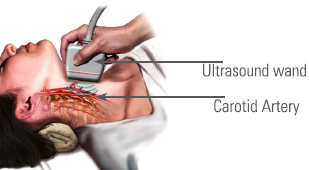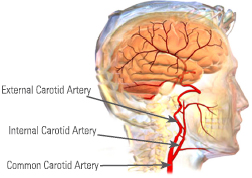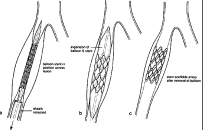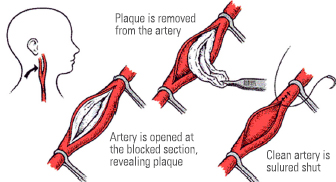Director:
Vascular and Endovascular Sciences
Vice President:
Vascular Access Society of India
Editorial Board:
Annals of Vascular Surgery
Councilor:
Asian Society of Vascular Surgery

Blood is delivered to the brain by the 2 large carotid arteries in the front of your neck. Each carotid a, supplies oxygen to one-half of your brain. A stroke most often occurs when the carotid arteries become blocked and the brain does not get enough oxygen. The blockage of this artery may lead to loss of movement, feeling, speech or vision.

Although there are no symptoms specific to carotid artery disease. The warning signs of a stroke are a good way to tell if there is a blockage in the carotid arteries. Transient Ischemic Attack CT., is one of the most important warring signs that you may soon have a stroke. Sometimes called "mini-strokes," TIAs are temporary episodes of headache. Dizziness, tingling, numbness, blurred vision, confusion, or paralysis that can last anywhere from a few minutes to a couple of hours. See a doctor right away if you or someone you know has the symptoms of a TIA.
If you have carotid artery disease, you probably also have severe coronary artery disease or have a parent who died from corona, artery disease.
So, the risk factors for carotid artery disease are similar to those for coronary artery disease:

Physical Exam: Your physician may suspect carotid artery disease based on your symptoms. He will listen to your carotid artery blood flow by placing a stethoscope on both sides of your neck. A - whooshing' sound or bruit indicates there may be a narrowing and your doctor will order further diagnostic testing.
Doppler testing: An ultrasound technician will perform this non-invasive painless test by passing a sensor over the neck area where the carotid arteries are located. The sensor generates sound waves that bounce off the arteries. The echo that bounces back is measured and changes in frequency measure the flow of blood. There will be a difference in flow in narrowed areas.

Arteriogram: A vascular intervention list will inject dye into your arteries through a catheter placed in a small incision in your groin area. It shows a roadmap on a Computer screen of the blood flow to determine a narrowing.

The treatment of carotid artery disease depends on the amount of narrowing. For blockages less than 50% medical management is the usual treatment. This includes risk factor management and possibly blood thinners. Blockages between 50-70% are treated medically unless you are exhibiting symptoms of stroke or TIA. Stenting or surgery may be recommended for blockages greater than 50% with symptoms and greater than 70% without symptoms.

Stenting: A vascular intervention list opens the blocked carotid artery by placing an expanding balloon within the blood vessel, pushing aside the plaque and allowing a new lining to form within the stent. The procedure is performed through a cather inserted into a blood vessel at the groin site.
Surgery: Vascular surgeons perform, under general anesthesia, by opening the narrowed artery in the neck. The narrowing plaque is removed and the artery is closed directly or with a patch. The procedure takes under two hours and generally patients go home the next day.

Lifestyle Modifications: You can cut your risk of carotid artery disease and stroke with the same lifestyle changes as are recommended for heart disease. If you smoke, quit. Drink no more than 2 alcoholic beverages daily. Maintain a healthy weight through proper diet and at least 30 minutes of exercise daily. Finally, "know your numbers" —keep track of your blood pressure and cholesterol by routine physician follow ups.
In the last five years it has been observed and published about the safety and efficacy of carotid artery stenting in stroke patients. These have shown that for stroke patients, stenting in the safer procedure in the short term and prevents major stroke by bringing down the scope of stroke to just 3% post treatment.
You will be discharged on the second day of the procedure. There can be a risk of infection and bleeding which will be monitored by our healthcare specialist. You may resume to your regular activities within a week’s time and be back to normal routine.
The Vascular Centre at Medanta offers all the services you need to evaluate and treat conditions related to blood vessels.
Medanta has a highly regarded team of vascular specialists, including surgeons, interventional radiologists and technicians. We have extensive experience caring for patients with carotid artery disease, including complex, high risk patients with other health conditions.
We have the most advanced screening technology available, alone with a dedicated vascular operating room and a new endovascular treatment area.
Medanta - The Medicity, the first and only hospital of its kind in the country have combined the most advanced technology with every possible patient comfort. From inpatient and outpatient services to physician offices and top notch prevention programs, everything is under one roof and provided by an expert staff focused entirely on cardiac medicine.